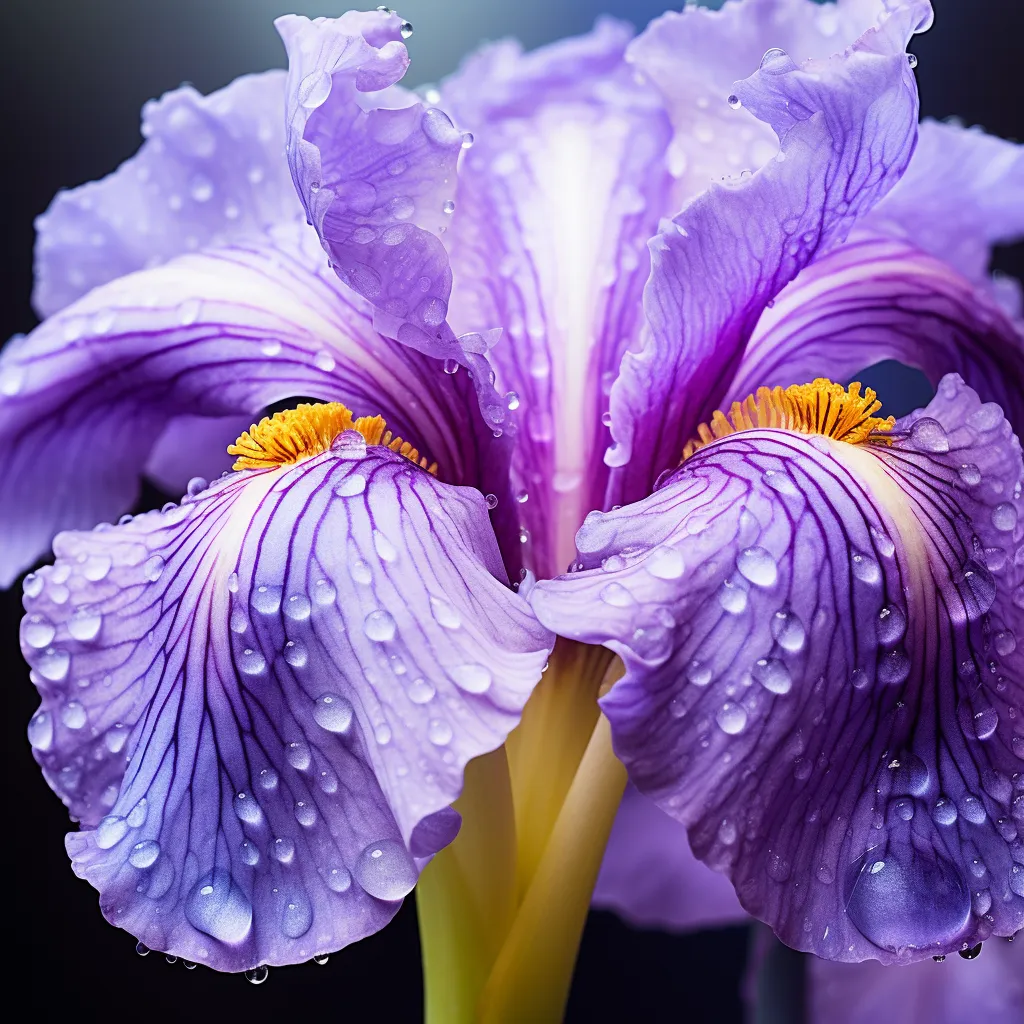Story of Day :
Contents
Iris magnifica (Magnificent Iris) Plant Care Tips
Are you looking for a plant that will add a touch of elegance and beauty to your garden? Look no further than the Iris magnifica, also known as the Magnificent Iris.
With its stunning blooms and easy care requirements, this plant is sure to become a favorite in your garden.
In this article, we will discuss some essential care tips to help you grow and maintain healthy Iris magnifica plants.
1.
Selecting the Right Location
The first step in caring for your Iris magnifica is selecting the right location in your garden.
These plants prefer full sun or partial shade, so choose a spot that receives at least six hours of sunlight per day.
Ensure that the soil is well-draining to prevent waterlogging, which can lead to root rot.
2.
Soil Preparation

Before planting your Magnificent Irises, prepare the soil by incorporating organic matter such as compost or well-rotted manure.
This will improve drainage and provide essential nutrients for healthy growth.
- Tips:
- – If your soil is heavy clay, consider amending it with sand or perlite to improve drainage.
- – Test the pH of your soil; Irises prefer slightly acidic to neutral conditions with a pH range between 6.0-7.5.

3.Planting Technique
- – Dig holes that are about twice as wide and deep as the iris rhizome (bulb).
- – Place each rhizome horizontally in the hole, with the top exposed just above the soil surface.
- – Space your plantings about 12 to 24 inches apart to allow for adequate air circulation.
- – Gently backfill the hole and firm the soil around the rhizome, being careful not to bury it too deep.
4.
Watering
Proper watering is essential for healthy growth and blooming of your Iris magnifica plants.
Water them regularly during their active growing season (spring and early summer), ensuring that they receive about an inch of water per week.
However, be cautious not to overwater as this can lead to root rot.

- Tips:
- – Avoid overhead watering; instead, use a soaker hose or drip irrigation system to water at ground level.
- – Water deeply but infrequently, allowing the top few inches of soil to dry out between watering sessions.
5.
Fertilization

To promote healthy growth and abundant blooms, fertilize your Iris magnifica plants in early spring before new growth begins.
Use a balanced slow-release fertilizer or a granular fertilizer formulated specifically for irises according to package instructions.
-
– Do not over-fertilize as excessive nitrogen can result in lush foliage but fewer blooms.
6.Weeds & Pest Control
Weeds can compete with Irises for nutrients and moisture while pests like aphids or iris borers may attack them.
To keep these problems at bay:
-
– Mulch around your plants with organic matter like wood chips or straw; this will help suppress weed growth and retain soil moisture.
– Regularly inspect your plants for signs of pests and take appropriate measures such as applying insecticidal soap or using natural predators to control the population.
7.
Dividing Irises
Iris magnifica plants can become overcrowded over time, leading to fewer blooms.
To maintain their vigor and promote better flowering, divide the rhizomes every 3-4 years in late summer or early fall when the foliage begins to die back.
-
– Dig up the clumps carefully, making sure not to damage the rhizomes.
– Cut apart healthy sections with a sharp knife, ensuring that each division has a fan of leaves attached.
– Replant the divisions immediately at their desired location while ensuring proper spacing between them.
Summary
Iris magnifica (Magnificent Iris) is an excellent addition to any garden due to its stunning blooms and low maintenance requirements.
By following these care tips on selecting the right location, preparing soil properly, planting techniques, watering appropriately, fertilizing adequately but cautiously along with keeping weeds and pests at bay will go a long way in promoting healthy growth of your Magnificent Irises.